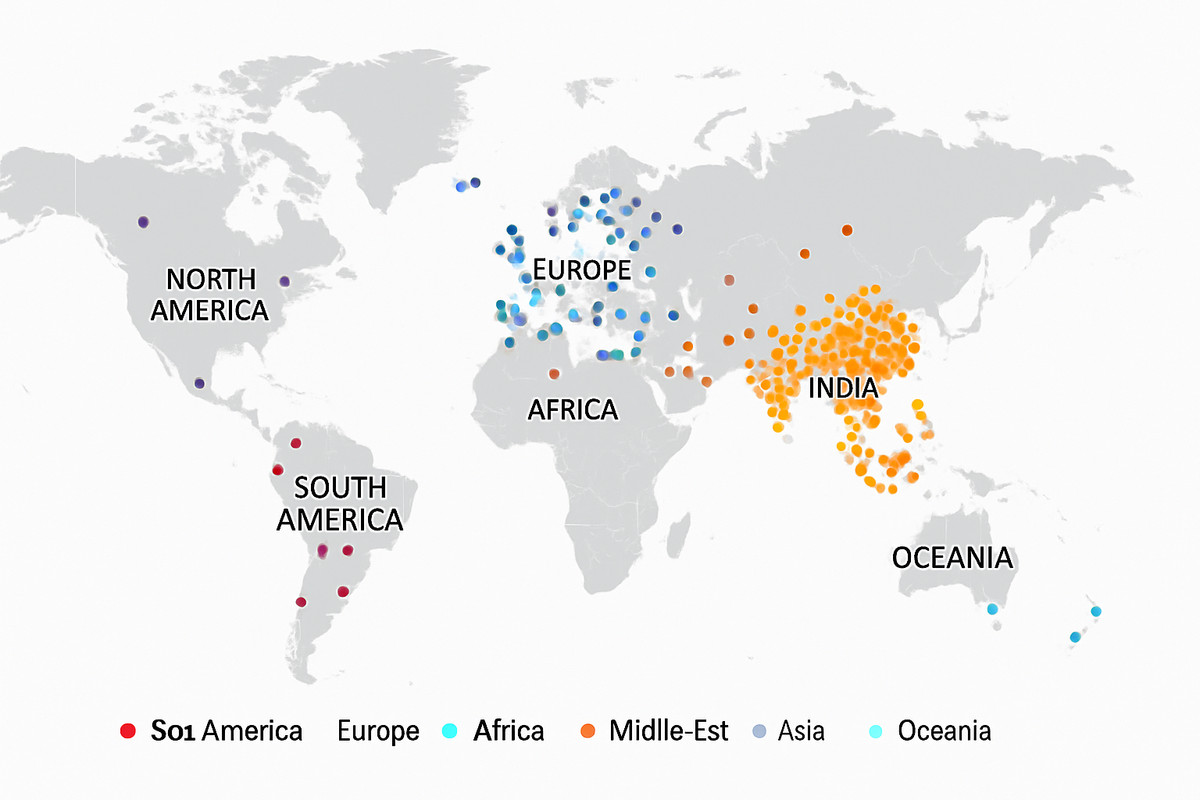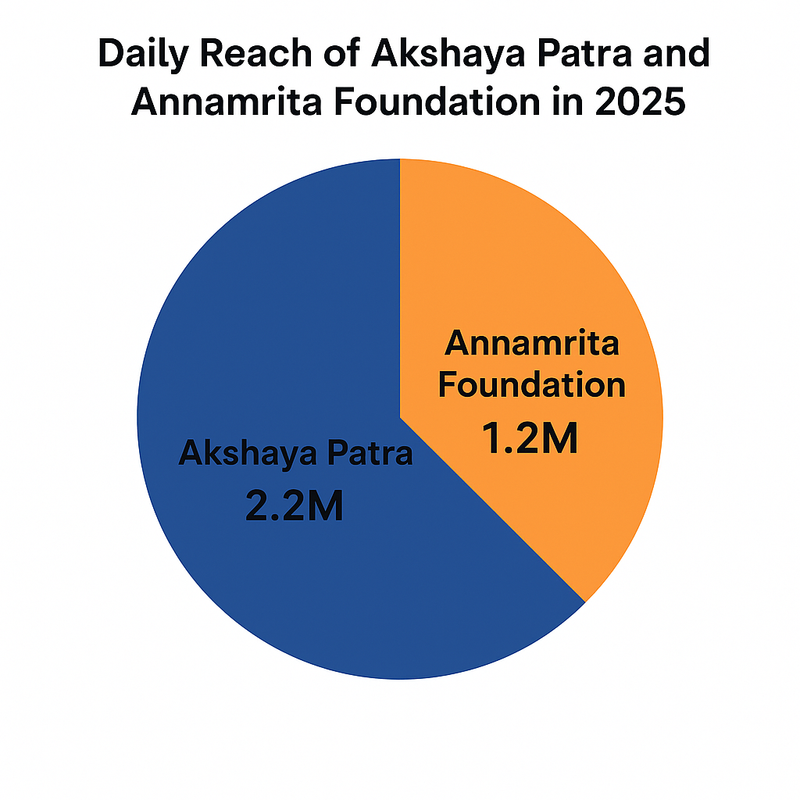From Vision to Reality: How One 69-Year-Old Monk's Dream Transformed into the World's Largest Spiritual Movement

This is the story of how a single man's spiritual vision in 1966 grew into a global movement that now feeds over 4 million children daily and operates temples across every continent on Earth.
The Humble Beginning of an Extraordinary Vision
On August 13, 1965, a 69-year-old Indian monk named A.C. Bhaktivedanta Swami, later known as Srila Prabhupada, boarded a cargo ship called the Jaladuta bound for New York. He traveled alone, carrying little more than a suitcase, an umbrella, some dry cereal, about seven dollars worth of Indian currency, and several boxes of his translated Sanskrit texts. During the treacherous 35-day journey, he suffered two heart attacks but was determined to fulfill his spiritual master's instruction to spread Krishna consciousness to the Western world.
When he arrived in New York Harbor on September 17, 1965, Prabhupada was utterly alone—no friends, no money, no followers, and no clear plan of how he would accomplish his seemingly impossible mission. Yet within his heart burned a powerful vision: to spread Krishna consciousness everywhere in the world.
The Foundation of a Global Movement
On July 13, 1966, in a small storefront at 26 Second Avenue in New York's Lower East Side, Srila Prabhupada officially founded the International Society for Krishna Consciousness (ISKCON). The incorporation document outlined seven ambitious purposes, including systematically propagating spiritual knowledge to society at large and achieving real unity and peace in the world.
The timing seemed impossible. The headquarters was just one humble storefront, yet Prabhupada's vision encompassed the entire globe. As one biographer noted, "He seemed to know that he would have temples filled up with devotees". His dream was not simply theistic rhetoric—he literally meant to enact every item in the charter.
The Extraordinary Global Expansion
The numbers speak for themselves. From that single New York storefront, ISKCON has grown into a worldwide spiritual phenomenon. Today, the organization operates:
- Over 800 temples and centers worldwide, with some sources indicating up to 2,000+ temples globally
- Presence in over 150 countries across all six continents
- India alone hosts over 850 temples, making it the region with the highest density of ISKCON centers
- 135 centers in Europe, 80 in Asia, 68 in North America, 60 in South America, 69 in Africa, and 10 in Australia

This expansion represents one of the most successful spiritual movements in modern history, achieving global reach within just five decades.
The Humanitarian Impact: Feeding Millions Daily
Perhaps even more remarkable than ISKCON's temple network is its humanitarian outreach. The organization's Food for Life program has become the world's largest vegetarian food distribution program, serving millions of meals daily in over 60 countries.
The scale of this operation is staggering:
- Over 1.2 million children receive free mid-day meals daily in India alone through the Annamrita program
- The Akshaya Patra Foundation, an ISKCON initiative, serves 2.2 million children daily across 42 locations in 12 states of India
- In total, ISKCON's Food for Life network provides over 1 million free meals daily worldwide
- Over 8.7 billion servings of prasadam have been distributed globally

These numbers represent more than statistics—they represent millions of children who can attend school instead of working for food, families who receive nutrition during disasters, and communities that benefit from this massive humanitarian effort.
The Vision Realized
The transformation from Srila Prabhupada's 1966 vision to today's reality is nothing short of extraordinary. In just 12 years before his passing in 1977, he established 108 ISKCON centers across six continents. He circled the globe 14 times on lecture tours, bringing Krishna consciousness to thousands of people.
What began as one elderly monk's seemingly impossible dream has become:
- A global spiritual movement touching millions of lives
- The world's largest vegetarian food relief program
- A network of educational institutions, rural communities, and cultural centers
- A force for interfaith dialogue and humanitarian service
The Power of Vision
Srila Prabhupada's story demonstrates that age, resources, and circumstances need not limit the scope of one's vision. At 69, with seven dollars and no connections, he embarked on a mission that many would have considered impossible.
Today, every day, ISKCON's network serves over 5 million meals to children through mid-day meal programs alone[script reference], operates hundreds of temples where millions gather for spiritual nourishment, and continues expanding its reach into new communities and countries.
Lessons for Our Time
This remarkable transformation offers several profound lessons:
Vision without boundaries: Prabhupada never thought small. Even from a tiny storefront, he envisioned a global movement.
Service as the foundation: The success of ISKCON stems not just from spiritual teachings but from practical service—feeding the hungry, educating children, and caring for communities.
Persistence despite obstacles: The journey was fraught with challenges, yet the vision remained constant and unwavering.
Starting where you are: The movement began with whatever resources were available—a small room, a few interested people, and an unshakeable vision.
The story is ultimately about the power of spiritual vision combined with practical action. It asks us to consider: if one person with virtually nothing could create such a transformation, what might be possible if more of us embraced similarly expansive visions for serving humanity?
In a world often focused on limitations and obstacles, the ISKCON story stands as a testament to what becomes possible when vision, service, and determination converge. The question "What's your vision?" is not merely rhetorical—it's an invitation to consider how we might contribute to the world's transformation, regardless of our current circumstances or resources.
What began with one monk's impossible dream continues to grow, feed, and inspire millions worldwide. The vision that started on a cargo ship in 1965 remains as relevant and powerful today as ever.
Disclaimer: Some essays on this blog are AI-generated explorations of various topics.